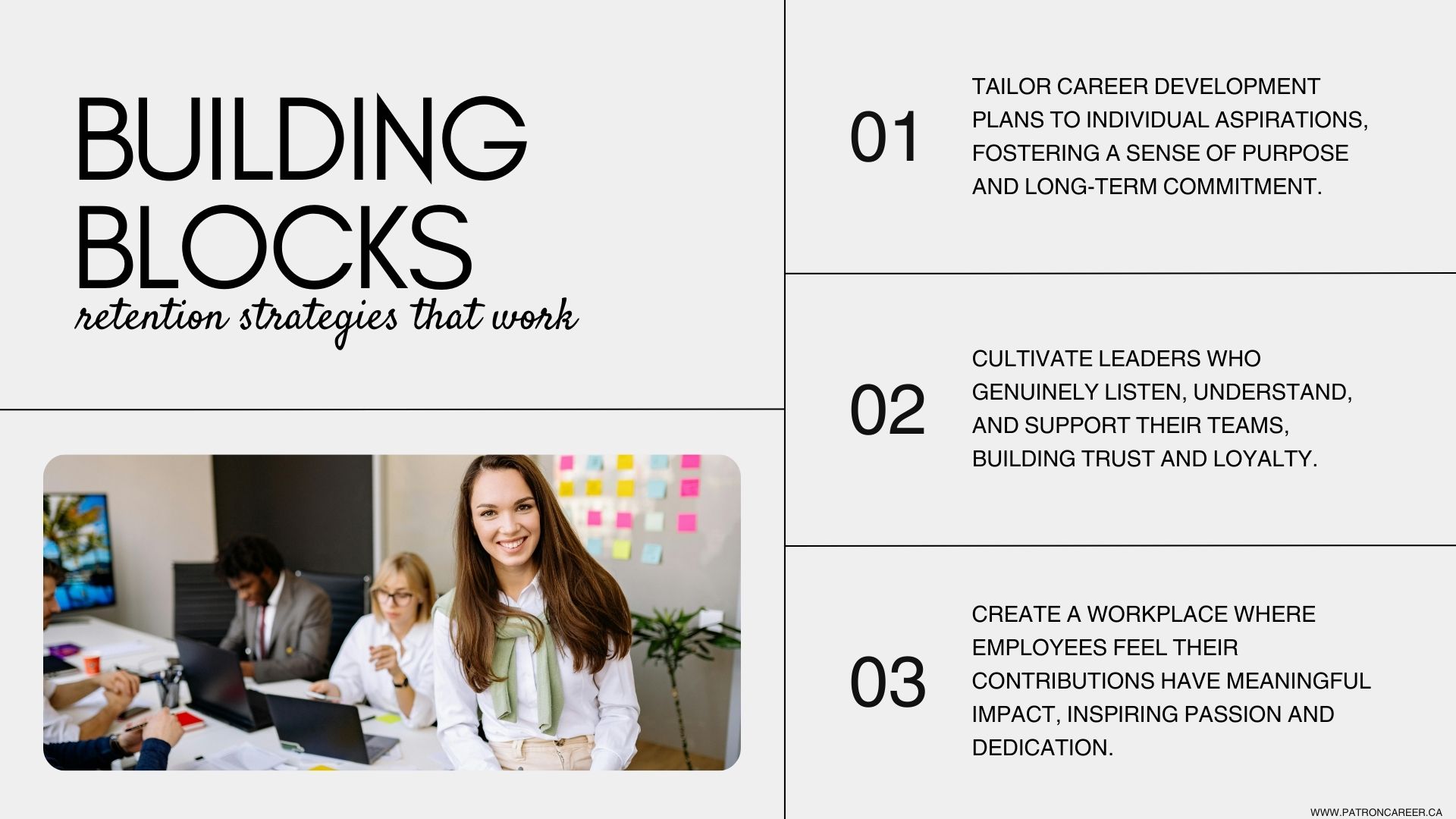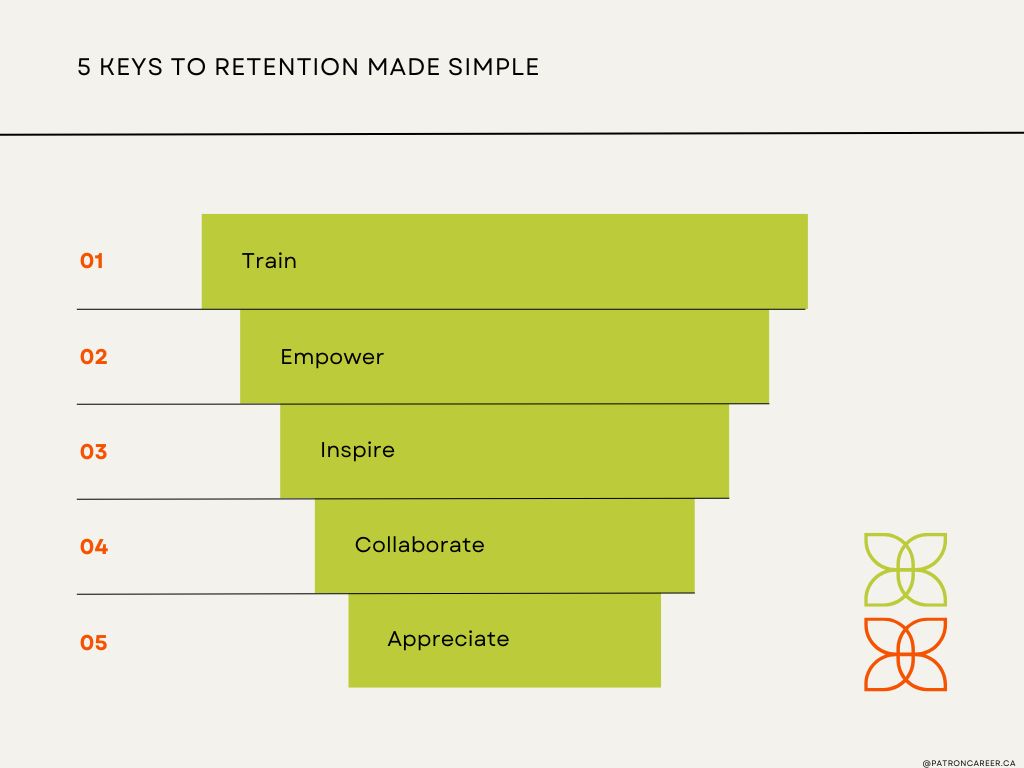4 Actionable Strategies to Retain Your Best Talent: A Guide for Employers
In the current talent-driven market, attracting top talent is only half the battle—retaining them is where the real challenge lies. When a company loses its best and brightest talent, the workplace dynamic changes. There is decreased employee morale, increased hiring costs and lost productivity. A 2023 LinkedIn study found that 74% of companies experienced problems with retention of employees.
To ward off this deplorable scenario, it is crucial that employers take the necessary steps and employ strategic methods to reduce turnover in their organization. In today’s blog, we share four tried and tested methods to retain your most prized assets and also additional tips for creating a workplace employee where employees stay and prosper.
Starting off, let's understand why it's crucial to focus on retention.
Why Retention Matters: The Cost of Losing Top Talent
Retaining employees is more than creating loyalty—it’s a strategic advantage in today’s era where talent is a key differentiator. When highly skilled employees leave, they take along a plethora of skills, expertise and sometimes even their client relationships.
Important Employee Retention Facts:
- Replacement costs could run up to 50 to 60% of the annual salary, depending on the employee.
- Higher retention rates bring along high profits, of around 21%.
- Employee turnover disrupts workflow efficiencies, leading to delayed project completions.
So, keeping the best talent is equivalent to keeping the business running, and ensuring team cohesion and a culture of loyalty and trust. But, how do you create an engaging work environment where employees feel inspired to stay?
4 Employee Engagement and Retention Strategies That Work
1. Foster a Culture of Growth and Development
When the workplace itself offers opportunities for personal and professional growth, then why would any employee ever leave? That is the power of work culture and environment on the employees. It makes them invested in their roles and commits to helping them achieve their career aspirations and goals.
Ideas to Put It into Practice:
- Invest in learning: It's vital to push employees to continue learning develop new skills and gain experience. Courses, workshops, mentorships and certifications are a good start to help employees.
- Define Career Paths: Provide employees with a real, visible career roadmap at the onboarding stage itself. Show them how they can grow within your organization.
- Employee Mentorship: Pair an experienced team member (their mentor) with newer hires to build a culture of learning.
Bonus Tip: An introductory personalized development plan during performance reviews would lead to visible steps toward reaching career goals for employees.
2. Make Work-Life Balance a Priority
Many employees suffer from burnout the major reason being the inability to balance personal and professional lives. Burnout often results in talented employees leaving their roles. As an employer, it’s important to take into account all workplace stressors employees suffer from and take preventive measures to mitigate them.
Ideas to Put It into Practice:
- Flexible Work Options: Giving employees the autonomy to choose where they want to work is a great hit at work-life balance. Offer hybrid, remote or flexible schedules were feasible.
- Wellness Programs: Include mental wellness resources, fitness incentives, and wellness days.
- Workload Balance: Monitoring workloads to reallocate tasks will show signs of stress being shown by an employee.
Did you know?
According to a Gallup survey, companies that are highly established in achieving work-life balance have a 25% lower turnover rate.
3. Recognize and Reward Excellence
A culture where employee recognition matters is bound to have a happy workforce. Reward employees at their milestones, no matter how small or big. It fuels new-found motivation in employees to pursue their careers and stay with you long-term.
How to Implement:
- Create a Recognition Program: to build a culture of recognition, use platforms to publicly celebrate their achievements.
- Monetary rewards: offer bonuses, salary increments, or profit-sharing options to employees.
- Non-monetary rewards: These include paid leaves, retirement benefits, travel allowances, financial wellness programs or gift cards. A simple thank-you note also goes a long way.
Related: 6 Ways to Build a Culture of Recognition at Work
4. Create Strong Leadership and Communication
Good leadership is the foundation for retention. The leaders engage, motivate, and communicate in such a way that teams want to stick around. Remember that employees don’t leave bad jobs, they leave bad managers who fail to appreciate and recognize their value.
How to Implement:
- Manager Training: train leaders to combat unforeseen conflicts, provide valuable feedback and guide their teams.
- Open Communication: Foster healthy and transparent communication through face-to-face meetings, anonymous surveys or open-door policies, whatever works best.
- Lead By Example: Integrity and empathy, brought to the table by managers, create the standard for the entire organization.
Related: 5 leadership qualities every HR leader must have!
Exclusive Tip: For effective and regular feedback, implement 360-degree feedback for managers to ensure they're aligned with their team's needs.
Extra Tips for Employers to Cultivate a Stay-Worthy Culture
Employers can safeguard themselves from the unprecedented wave of resignations, by following these important tips and making employees stay long-term with them!
- Build a sense of belonging in employees by letting them know how invaluable they are to the company. Organize team-building activities to strengthen workplace relationships.
- Choose stay interviews as a common criterion to understand what makes an employee want to keep working for your ruination. These insights help companies to frame comprehensive policies that benefit both them and the workforce.
- A healthy workplace is ideal, but competitive salaries and fringe benefits are also a must- have for staff retention.
- A promotion from within the culture is proportional to increased retention. Giving employees opportunities to excel and grow within the company is a key driver of retention.
The Ripple Effect of Retaining Top Talent
Retention isn’t just a policy to keeping your best and brightest, it’s a testament to your company’s values and leadership. Committing to employee engagement, development and healthy work-life balance is imperative to retain your workforce. Start implementing these strategies today and watch your team thrive tomorrow.
Connect with us today.






